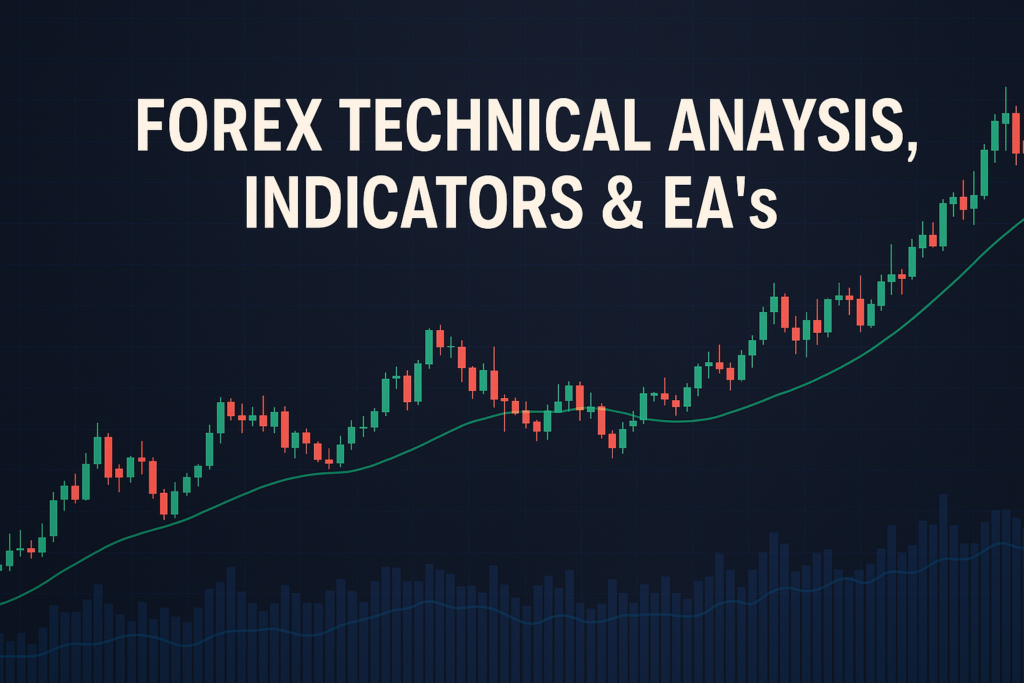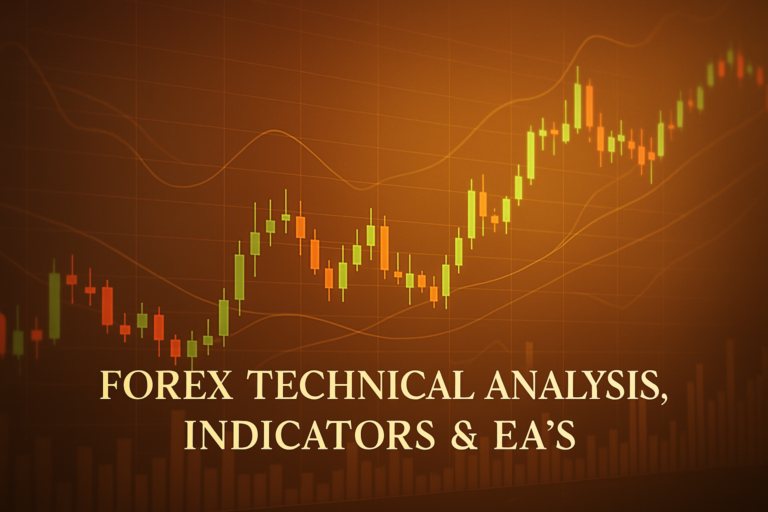
Alligator: An essential Forex trading tool for identifying trends and making informed trading decisions.
The Alligator is a popular trading tool in the Forex market. It helps traders spot trends and make informed decisions. Imagine a powerful creature that guides you through the waters of Forex trading. The Alligator indicator is that creature, using three moving averages to analyze price movements.
However, many traders, both beginners and professionals, struggle to use the Alligator effectively. They often find it tricky to interpret its signals. This confusion can lead to missed opportunities and losses. Understanding the Alligator is essential for traders to gain an edge in the Forex market. By applying its principles, traders can increase their chances of success.
This article will explore the Alligator indicator, its history, advantages, and disadvantages. We’ll also discuss how to apply it on trading platforms and several strategies for successful trading.
Before diving in, it’s important to mention forex requotes, which can impact your trades. Understanding these concepts will enhance your Forex trading experience.
What is an Alligator?
The Alligator indicator is a tool used in Forex trading. It consists of three lines, representing moving averages. These lines help traders identify trends and potential entry or exit points. Think of it as a set of eyes, watching the market for you.
Types of Alligator
There are different types of Alligator indicators. The most common ones are:
- Simple Moving Average: This is the basic version. It averages prices over a set period.
- Exponential Moving Average: This type gives more weight to recent prices. It responds faster to price changes.
- Weighted Moving Average: This one also emphasizes recent prices but in a different way.
How Alligator Smooths Out Price Action
The Alligator indicator smooths out price movements by averaging them over time. This helps traders see the overall trend instead of getting distracted by short-term fluctuations. As the Alligator opens its mouth, it indicates a strong trend. When the lines converge, it suggests a potential pause in the trend.
Common Periods Used and Why
Traders often use common periods like 13, 8, and 5 for the Alligator lines. These numbers represent the average price over time. Using these specific periods helps traders see clearer signals. It’s crucial to understand these periods to interpret the Alligator correctly.
The History of Alligator: How It Became Popular
Origin of Alligator
The Alligator indicator was created by Bill Williams in the 1990s. He designed it to help traders make better decisions by understanding market trends. Williams believed that traders needed a tool to navigate the complexities of the Forex market.
When Did Traders Start Using It Widely?
Over the years, the Alligator gained popularity among traders. Many saw its effectiveness in identifying trends and wanted to incorporate it into their trading strategies. As more resources became available, traders started using the Alligator more widely.
Real-Life Stories
Professional traders have shared success stories using the Alligator. For example, one trader used it to identify a strong upward trend. By following the signals, he entered the market at the right time and made significant profits. This shows how the Alligator can be a valuable tool in achieving trading success.
Advantages and Disadvantages of Alligator
Advantages:
The Alligator indicator has several advantages:
- Helps Identify Trends Easily: The Alligator makes it simple to spot trends, allowing traders to make informed decisions.
- Useful for Dynamic Support and Resistance: The lines act as dynamic support and resistance levels, guiding traders on when to enter or exit trades.
- Works Well for Crossover Strategies: Traders can use the crossover of the lines to signal potential buy or sell opportunities.
Disadvantages:
Despite its benefits, the Alligator also has some downsides:
- lags Behind Price Movements: Sometimes, the Alligator may not respond quickly enough to sudden price changes.
- Can Give False Signals in Sideways Markets: During periods of low volatility, the Alligator might produce misleading signals.
How to Apply Alligator on MT4 & MT5
Step-by-Step Guide to Adding Alligator on Charts
To add the Alligator indicator on MT4 or MT5, follow these simple steps:
- Open your trading platform.
- Go to the “Insert” menu.
- Select “Indicators,” then “Bill Williams,” and choose “Alligator.”
Customizing Alligator Settings
You can customize the Alligator settings to fit your trading style. Adjust the periods, colors, and types of moving averages. A common setup is to use 13, 8, and 5 for the periods. Choose colors that stand out for easy visibility.
Saving Templates for Easy Application
Once you have customized the Alligator indicator, save it as a template. This way, you can quickly apply the same settings to other charts in the future.
5 to 7 Trading Strategies Using Only Alligator
All Time Frame Strategy (M5 to D1)
This strategy works on all time frames, from M5 to D1. Look for the Alligator’s mouth opening and closing to signal trends. For example, if the mouth is open and pointing upward, it’s a buy signal. Conversely, if it’s closing and pointing downward, it’s a sell signal.
Trending Strategies
In trending markets, use the Alligator to identify the direction. Enter a buy trade when the green line crosses above the red line. Exit when the Alligator’s lines converge.
Counter Trade Strategies
This strategy involves trading against the trend. Wait for the Alligator to show a strong trend, then look for signs of reversal. For example, if the Alligator opens wide upward, wait for it to close before selling.
Swing Trades Strategies
For swing trading, look for price swings within the Alligator’s lines. Buy when the price touches the lower line and sell when it reaches the upper line. This strategy can capture smaller price movements effectively.
5 to 7 Trading Strategies Combining Alligator with Other Indicators
Alligator with RSI
Combine the Alligator with the Relative Strength Index (RSI). When the Alligator opens up and the RSI is above 70, it indicates a potential sell signal. Conversely, if the RSI is below 30, it’s a buy signal.
Alligator with MACD
Using the Alligator with the MACD can provide more confirmation. When both indicators signal a buy or sell, it strengthens your trade decision. For example, if the Alligator opens upward and the MACD crosses above the signal line, consider it a strong buy signal.
Alligator with Bollinger Bands
When the Alligator aligns with the Bollinger Bands, it can provide insights into breakouts. If the price touches the upper band while the Alligator opens wide, it’s a sign to sell. If it touches the lower band, consider buying.
For more details on effective trading, check out this guide on forex currency trading.
Top 10 FAQs About Alligator
1. What is the Alligator indicator?
The Alligator indicator helps traders identify trends using three moving averages. It shows when to buy or sell based on market conditions.
2. Who created the Alligator indicator?
Bill Williams created the Alligator indicator in the 1990s to help traders make better decisions in Forex trading.
3. How do I add the Alligator to my trading platform?
On MT4 or MT5, go to the “Insert” menu, select “Indicators,” then “Bill Williams,” and choose “Alligator.”
4. What are the common periods used for the Alligator?
Common periods are 13, 8, and 5. These numbers help traders see clearer signals and trends.
5. Can the Alligator give false signals?
Yes, the Alligator can give false signals, especially in sideways markets where there is low volatility.
6. How do I customize the Alligator settings?
You can customize periods, colors, and types of moving averages to fit your trading style. It’s best to choose colors that stand out for easy visibility.
7. How do I save my Alligator template?
After customizing the Alligator, right-click on the chart, select “Template,” and then choose “Save Template.” Name it for easy access later.
8. What is the best time frame to use the Alligator?
The Alligator works well on all time frames, but many traders prefer the M15, H1, and H4 for more reliable signals.
9. Can I use the Alligator with other indicators?
Absolutely! Combining the Alligator with indicators like RSI or MACD can provide confirmation for your trade decisions.
10. How can I practice using the Alligator?
You can practice using the Alligator on demo accounts. This allows you to test strategies without risking real money.
Conclusion
The Alligator indicator is a powerful tool for Forex traders. It helps identify trends, support, and resistance levels. By understanding its advantages and disadvantages, you can make better trading decisions.
Remember to test different strategies before using real money. With practice, the Alligator can guide you through the waters of Forex trading, leading to success.
To explore the topic from another angle, refer to this informative source International Monetary Fund, IG Group
Expand Your Knowledge
- 📌 Forex Trading Learning Road Map
- 📌 Forex Trading Course with no Fees
- 📌 Forex Trading Issues, Problems, and Solutions
- 📌 Forex Daily Forecast & Live Updates
- 📌 Forex Fundamental & News Analysis: Tomorrow’s Market Movers & Trade Opportunities
- 📌 Forex Education Hub: Learn & Profit
- 📌 Forex Technical Analysis, Indicators & EA’s
Start Trading Today
Ready to take your forex trading to the next level? Open an account with Exness, one of the most trusted platforms in the industry. 👉 Sign Up Now and trade with confidence!
My recommended broker stands out with ultra-low spreads for beginners, instant withdrawals, and zero spread accounts for pro traders.
Trusted since 2008, lightning-fast execution, no hidden fees, and a secure, transparent trading environment—giving you the edge you need to succeed. 🚀
Watch this helpful video to better understand Alligator:
Note: The video above is embedded from YouTube and is the property of its original creator. We do not own or take responsibility for the content or opinions expressed in the video.
The video on Forex Trading provides an in-depth look at the world of currency trading, targeting both beginners and seasoned traders. It begins with an explanation of what Forex trading is, describing it as the process of buying and selling currencies in the foreign exchange market. The video emphasizes the importance of understanding market trends, as they can significantly impact trading decisions. Viewers are introduced to key concepts like currency pairs, where one currency is exchanged for another, and the potential for profit or loss based on fluctuations in exchange rates. The presenter highlights the necessity of utilizing technical analysis and fundamental analysis to make informed trading decisions. Technical analysis involves studying charts and historical price movements to predict future trends, while fundamental analysis considers economic indicators and news events that could influence currency values.
As the video progresses, it covers various strategies and tips for successful Forex trading. It stresses the significance of risk management, encouraging traders to set stop-loss orders to minimize potential losses. The video also discusses the importance of choosing the right broker, as this can impact trading fees, execution speed, and overall trading experience. Furthermore, the presenter shares insights on the emotional aspects of trading, reminding viewers that discipline and patience are vital traits for success in the Forex market. The video concludes with a call to action, urging viewers to practice with demo accounts before committing real money, allowing them to build confidence and refine their strategies. Overall, the video serves as a comprehensive introduction to Forex trading, providing valuable insights for anyone looking to venture into this dynamic market.
In addition to the broad overview of Forex trading, a focused analysis of the EUR/USD pair is essential for traders. The EUR/USD is one of the most traded currency pairs in the world, and understanding its movements can greatly enhance trading strategies. Factors such as economic data releases, central bank decisions, and geopolitical events can affect the value of the Euro against the US Dollar. For those interested in a detailed examination of this currency pair, you can check out our EURUSD Analysis to stay updated on market trends and forecasts. This analysis will provide insights on potential trading opportunities and help traders make more informed decisions in the Forex market.



